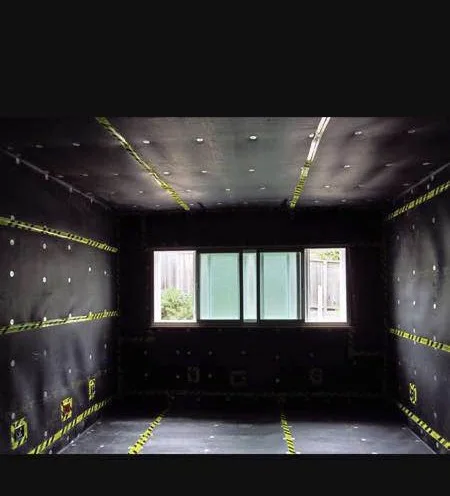

They are generally cheaper than multiple layers of drywall, much faster to install, and are significantly more effective at blocking low-frequency noise. While stacking drywall layers may get you to an STC 40-45 range, Mass Loaded Vinyl is a great option if STCs of 50 or higher are needed. Other additives are included for strength, such as the carbon fiber mesh for exterior applications (known as reinforced MLV), or UV additives for applications that are exposed to the sun for long durations. EVA membranes, on the other hand, are naturally pliable, and do not require plasticizers. Unfortunately, plasticizers break down over time, and they “off-gas” at room temperature, leading to unpleasant odors. PVC is a naturally rigid product (such as vinyl siding on a home), so an additive known as a plasticizer must be added to give it flexibility. When it comes to Mass Loaded Vinyl, there are 2 primary polymer bases – PolyVinyl Chloride (PVC) and Ethyl Vinyl Acetate (EVA). See a Video of How Mass Loaded Vinyl is Made


#MASS LOADED VINYL WALL FULL#
Other machines require a full machine-line shutdown, which can result in long lead times for custom thicknesses. Some extrusion lines have a variable dye, allowing for quick changing of MLV thicknesses. When the vinyl is properly mixed, it is extruded through a dye, and quickly cools and hardens onto cooling rolls, where it takes its final shape. The most common mass-loading additive is calcium carbonate, although in the past others were used, including lead and barium-sulfate. This liquefies the polymer pellets and mixes them with any additives. MLV is produced by extruding a polymer through a screw and chamber at high temperature and pressure. 1 psf Mass Loaded Vinyl is 1/8″ thick, while 2 psf is 1/4″ thick. While the weight changes, the density seldom does, so in reality the thickness changes as well. The most common areal weight for Mass Loaded barriers is 1.0 lb/sf. These are commonly between 0.5 pounds per square foot, and 2 pounds per square foot. Mass loaded vinyl comes in lots of thicknesses and weights. What STC does your wall need to achieve? Often times it’s 45 in office buildings, 50-55 in apartments and condos, and 65+ for proper soundproofing of theaters and music studios. Often the first step is to determine what your target STC is. By defining your requirements and understanding the pros and cons of various additives, you can select the best mass loaded vinyl for your project. We’ve broken down the most common variables for Mass loaded vinyl below. To make matters worse, there are trade names to navigate (often private labeling vinyl from the same plant) and loads of misleading marketing info, with outlandish STC claims. Most sources are simply resellers, and don’t even manufacture the vinyl barriers themselves. With so many types of mass loaded vinyl out on the market, it can be a tall order to select the brand and MLV type that is best for your project.


 0 kommentar(er)
0 kommentar(er)
